Bettinardi putters with their distinctive honeycomb milled faces have a fascinating history that I found out more about when I had a chat with founder Bob Bettinardi from his base in Illinois, USA.
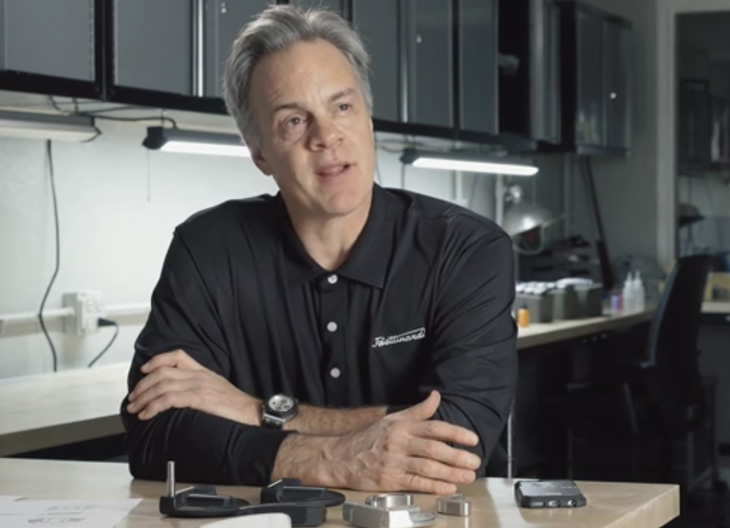
Bettinardi putters have been around in one form or another for a number of years but can you give us a background into the company and how you have reached where you are today?
From 1988 to 1992 I owned a manufacturing company making OEM (Original Equipment Manufacturer) parts for the US Department Of Defence, and in fact we still do make parts for them, as well as for the communications industry and the medical industry.
At that time I was also a very avid golfer and I walked into a golf Pro shop and saw a putter that said it was milled and the first thing that came into my mind was, “Wow, I wonder how they mill these things, because they must be using pretty much the exact same machines that I have”.
My milling machines were CNC milling machines and I didn’t think a lot of people had CNC milling machines. Most people had the standard Bridgeport milling machines where all of the milling was done by hand and not on computers as with a CNC machine.
As a result I made a few phone calls to the golf companies in California and found one company that did use computerised milling, but whose supplier was struggling to meet demand and he asked me to fly to California that weekend to meet and see if we could help and take over their production. So that is how I got started in the golf industry.
Did you start out making putters for yourself or for other brands?
From 1991 to 1998 I made a lot of putters for companies such as Callaway and Titleist, including the Scotty Cameron brand, under their name. So from 1992 to 1999 you could probably say I was the man behind the scenes for a lot of the golf putters that were being made.
Anything that was being milled I was probably involved in. The putters that were being cast, like the Ping and Odyssey putters, were being made in China so I was not involved with those, but we were involved in high end milled putters.
Whenever you mill something using your machines it is very expensive compared to the casting process where you put molten metal into a mould and leave it to cool to produce the product. I call that a “caveman” process when you compare it to milling, where today we use $12 million worth of state of the art equipment that allows you to produce products with a tolerance of 1/1000 of an inch.
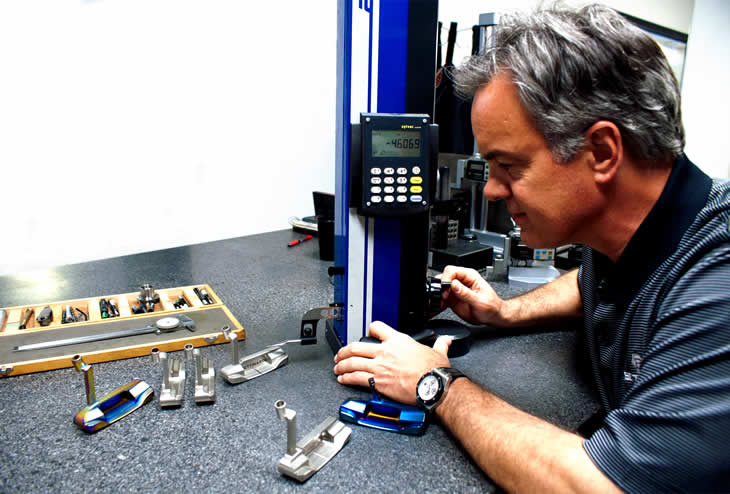
When did you start making putters under your own name?
In the year 2000 I decided I was going to go off on my own and start my own company, Bettinardi Golf Design, as I felt I had spent the previous 8 years learning design and manufacture of putters and thought that I could do this and probably do it better than the OEM golf companies could do.
The first golfer I picked up on Tour was Shigeki Maruyama and through his father we opened up a new distribution channel in Japan for products with my name on them.
In 2002 we did manufacturing deals with Ben Hogan. Ben Hogan wanted to put both of our names on the putter, Hogan and Bettinardi, so we agreed to that and did that for 3 years.
In 2003 Jim Furyk won the U.S. Open at Olympia Fields Country Club, which is about 20 minutes from our facility here in Chicago, using our putter that had the Bettinardi and Ben Hogan names on, which was really good for the brand.
In 2004 Callaway bought Spalding who were the parent company of Ben Hogan and basically put the brand on the shelf until it was revived again recently by someone else.
So in 2004 when Mizuno heard that Ben Hogan and I had split up they came calling and we did the same kind of deal we had done with Mizuno where we did all the manufacturing and putting our name and Mizuno’s name on the putters and they did the marketing and the sales of the Bettinardi Mizuno putter. That deal was a 4 year deal and took us from 2004 to 2008 and on a personal note I say to this day that those guys were great to work and deal with.
After 2008 they wanted to continue the relationship, but I said no because I didn’t think they were promoting my name as much as I would have liked them to do, so we parted ways and it was at that point that I decided I was going to go off on my own, not partner with anybody else even though I had offers to do so.
Therefore from 2008 until now we have been making our own putters with our own name, Bettinardi only, and I have to say that it has been great and we’ve been growing every year.
I’m 54 years old and my son, who came into the business 3 years ago with a business degree from De Paul University, is 25, and he has been a great help to the business in terms of marketing and sales.
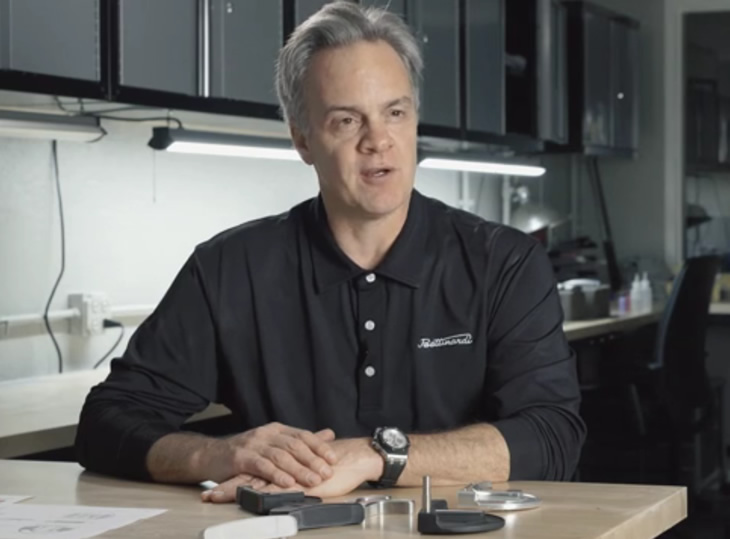
What would you say are the key elements for putter design as you see it?
The golf industry to me, and I think probably for at least 80% of the golf manufacturers, is like a triangle or a pyramid. If you look at the top of the pyramid you find the Rory McIlroy’s, Dustin Johnson’s and Matt Kuchar’s.
Going down the pyramid a little bit more and you get to the scratch handicap players, and then down a little bit more you find the 10-12 handicap players and then you get to the bottom with the 36 handicap guys.
So for me working with the Tour professionals at the top high end of the pyramid, the guys that influence the rest of the pyramid, has been a huge thing for Bettinardi Golf. We have Matt Kuchar on the staff, we have Eduardo Molinari playing our putter, and we have Freddie Couples playing our putter.
Numerous guys are playing our product, my son was at the U.S. Open at Chambers Bay working with some amateurs who are playing our putters who are going to be on Tour in the next couple of years. Working with these guys brings back ideas as to what we should be designing and manufacturing for the future.
Are you essentially designing putters for elite players?
Well, what we are doing is understanding that the elite players could putt with pretty much anything and still make putts, but what we do is we take their thoughts and ideas about what they really want from a putter.
When Matt Kuchar and I got together we developed the arm lock technology for him we never thought that the USGA would ban anchoring with the long and belly putters, but if you look on the USGA website they actually use his name to describe putting styles that will still be legal when the ban is implemented in 2016.
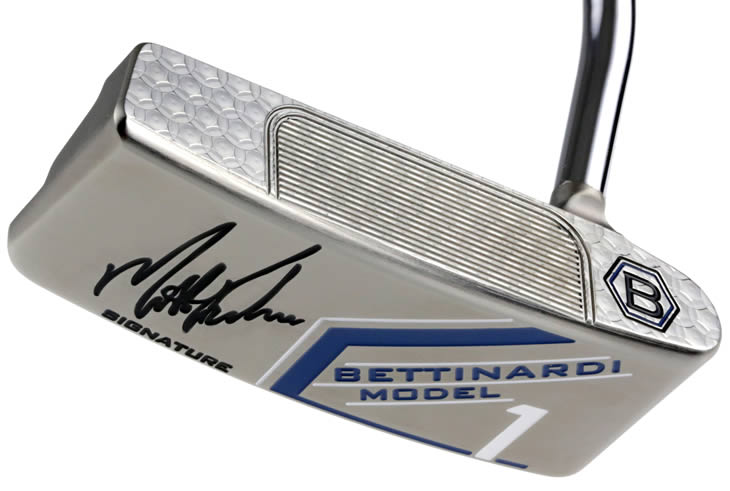
So there has been a huge run up to 2016 with people trying to understand what they are going to do when they have to stop anchoring and a lot of people are thinking of going to the armlock style.
My son is a good example, he’s a scratch golfer, and he now uses the armlock and loves it, but for me I just can’t use it. It doesn’t fit with my feel, but there are enough golfers out there who it works for.
When the ban is implemented do you see most people who currently anchor going with the armlock, or a counterbalance style putter or simply going back to a traditional style?
I think the counterbalance and the armlock will be about equal, but one of the reasons golf is such a great sport it that the putting element is so personal.
Apart from adding loft, was there anything specific you learnt from developing the armlock putter compared to what you would do with a normal putter?
Yes, you are adding loft so instead of 2° to 4° loft you would find on a normal putter we put 7° on the face because when your putter is locked to your left arm you automatically de-loft the putter. What I am going to do is investigate if there is a way of putting with the club locked on the right arm and in that case we may need to de-loft the putter rather than adding loft.
There are going to be a couple of different variations of the armlock putter from Bettinardi Golf and we are just going to have to see how the putter ban plays out as 90% of golfers will have to comply if they want to maintain a handicap.
I remember the Bettinardi putters in the early 2000’s that had the honeycomb face but were a copper colour. Would those have been the Hogan Bettinardi putters even though I remember them just as Bettinardi’s?
Yes, those were the Hogan ones in the early 2000’s.
The milling is obviously what Bettinardi Golf is most recognised for with the distinctive honeycomb pattern. Does having milling on the face soften the feel in any way or does it have another benefit.?
Well in terms of feel we have this new technology called F.I.T. face that stands for Feel Impact Technology. That is where you see the lines on the face and that has nothing to do, as far as we are concerned, with the roll of the putter, but everything to do with the feel because there is less material hitting the ball at impact which gives you a softer feel.
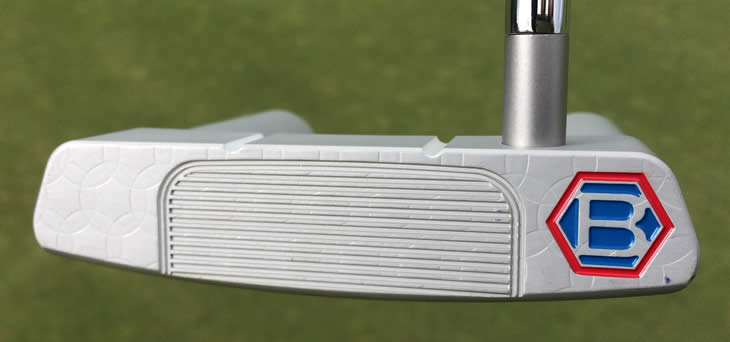
The honeycomb design for me was always about making the face flatter, nothing to do with feel. In the early 1990’s with the previous generation of milled putters, we saw a slightly concave surface on the face of the putters. I have a $150,000 microscope here that’s let you see 180 times more detail than you can see with the eye and when I looked at those putters you could see a concave surface.
So I wondered if that was a result of how the surface was being milled. With a regular fly mill finish the tool comes across the face on a horizontal plane whereas the CNC milling for the honeycomb comes vertically, like a sewing machine, and as a result of doing it this way there was no concaveness to the face.
So I felt because putting is so precise, aiming at a four and a quarter inch hole, that extra layer of precision with a perfectly flat face is going to help you make putts and give you an advantage.
You don’t want a convex face, you don’t want a concave face, you want a flat face and the honeycomb allowed us to do that.
Am I right in thinking the honeycomb pattern on the latest Bettinardi Golf putters is not as pronounced as it was in the Hogan Bettinardi days?
Yes you are right. What we’ve been able to do thanks to advances in technology is come up with a tool that allows us to machine the putters without creating a concave face, so we don’t need to honeycomb the face to such an extent to make it flat.
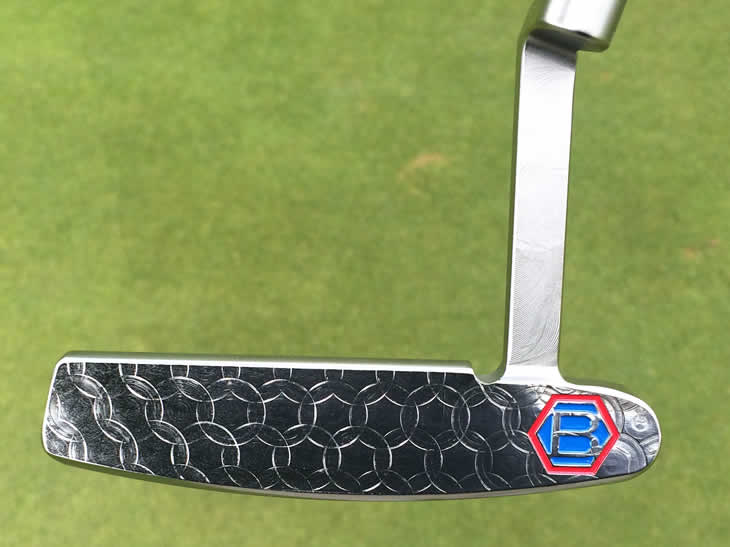
Some people thought that the honeycomb put bumps onto the face of the putter, even though you can see under the microscope that it doesn’t, so as we no longer needed honeycomb to such an extent to make it flat we could make it less pronounced to remove that.
Do you think that grooves on the face have any impact on spin or roll?
I personally don’t, but I know that other golf companies may tell you that their grooves get the ball rolling sooner or faster and therefore it will go on a truer line, but I just don’t see that.
At our studio here we have a camera and a laser set up system we use to fit people to our putters and we have used putters with the grooved F.I.T. face, with the honeycomb pattern, or plain fly milled faces and we don’t see any advantage in terms of the ball rolling faster from the face. We see zero effect.
I have noticed that the BB55 only has 2 degrees of loft but that nevertheless it is rolling very well. Is that because of all the weight that is at the back of the club?
Yes, exactly.
What is the MOI figure on the BB55?
I am not sure of the exact figure, but it is very high due to all the weight that is at the back. With the BB55 and the iNOVAi putters, which is an aluminium head with a large stainless steel weight at the back, we have a great range of high MOI putters.
In the BB Series you everything from the all steel precision feel of the BB1 to the aluminium, high MOI of the BB55. Is this to provide a range to suit all players?
Exactly. In racket ball 20 years ago they played with a very small racket then somebody came up with the idea of having a bigger racket and everybody realised it was so much easier to play the game with the bigger racket.
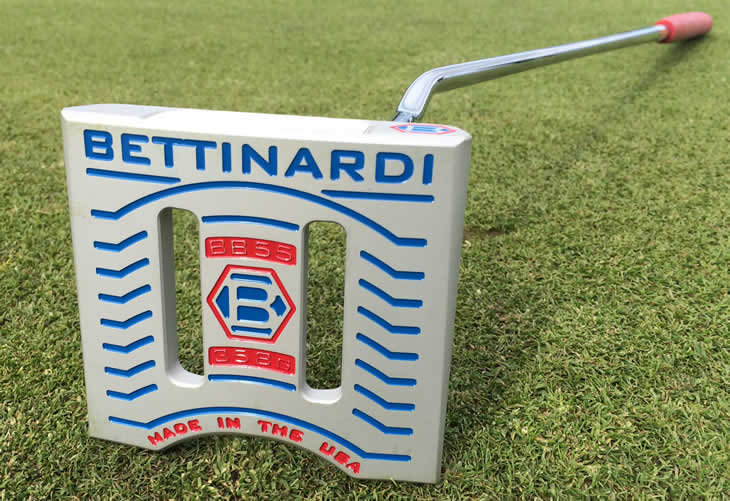
I think it is the same with putting and the bigger heads with high MOI make it easier so obviously some people will choose that option, whereas some still prefer the feedback of a traditional style.
What is the difference between the materials you use in your heads?
In terms of material aluminium gives the softest feel, the second would be carbon steel and the third would be stainless steel. The aluminium is in the BB55 and the iNOVAi range whereas the carbon steel is in the rest of the BB series, the Queen B Series and the Studio Stock Series.
Aluminium is two thirds as light as steel so we use it in the larger headed putters as the weight in most putters is around 340-350 grams so using a lighter material allows you to design a larger head. Conversely if you used aluminium to make a BB1 style putter head it would only be around 225-250 grams so it wouldn’t be heavy enough.
With the iNOVAi we have put the F.I.T. face on an aluminium putter to make it the softest of the soft in terms of feel. One of our Tour staff guys, Jim Herman, who is sponsored by Donald Trump, uses an iNOVAi and he just loves it.
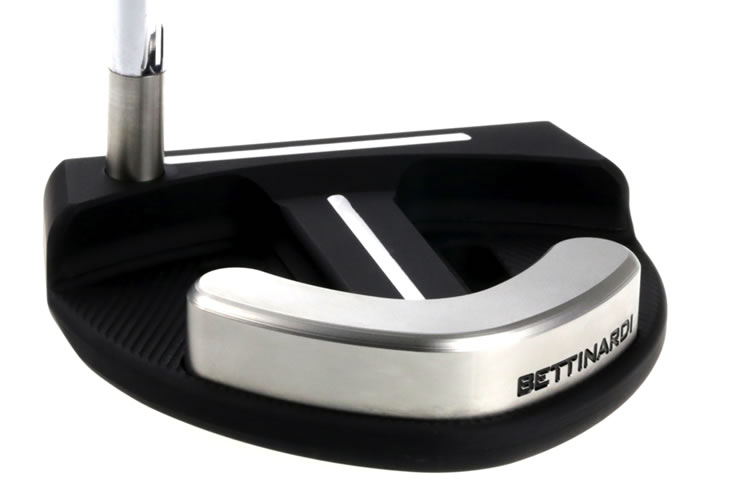
He’s told us he uses a harder golf ball because he needs it go further with his driver but on the green he doesn’t want that hard feel and the iNOVAi gives him that.
What would be softer? An aluminium putter without any milling or a carbon steel putter that did have the F.I.T. grooves on the face?
It definitely would still be the aluminium just given how much softer it is than carbon steel. It would be close with the impact of the F.I.T. grooves, but the aluminium would still have the softer feel.
In terms of head weight is there an optimum range for a putter?
I think the optimum weight for a putter is around the 350g mark.
What about an optimum shaft length?
Well, we should really be talking about swing weights rather than length and again it really is about personal preference. Some guys on Tour prefer a light putter, C8 or C9, and there is Jim Furyk who won the U.S. Open with my putter that had a swing weight of E2, so that was a personal preference for a heavy putter on the fast greens.
The BB1 for example comes in three length options of 33, 34, 35 inches, so how can you add weight to the putter to alter swing weight?
With the BB Series we can’t add any weight. So with the 34 and 35 inch shafts you are going to be between D0 and D6 swing weight.
Looking forward, what are your future plans for Bettinardi Golf?
Well, we moved into wedges this year and we love that. We stayed with the short game and we have been very successful with the launch.
We have a C-grind on the bottom of our wedges and we have 52, 54, 56, 58 and 60 degree options.
We are also working on new putter models for 2016 so all is looking very bright for Bettinardi Golf. We continue to grow every year compared to our competition who has been stagnant in terms of sales for the last 3-5 years, so we continue to take a little bit of market share each year so we are very excited.
If I could give you one wish for your market this year what would it be?
Matt Kuchar to win the British Open at St. Andrews! Vijay Singh won the 2004 USPGA at Whistling Straits using one of our putters, but he wasn’t contracted so couldn’t say much about it, but with Kuchar I could!